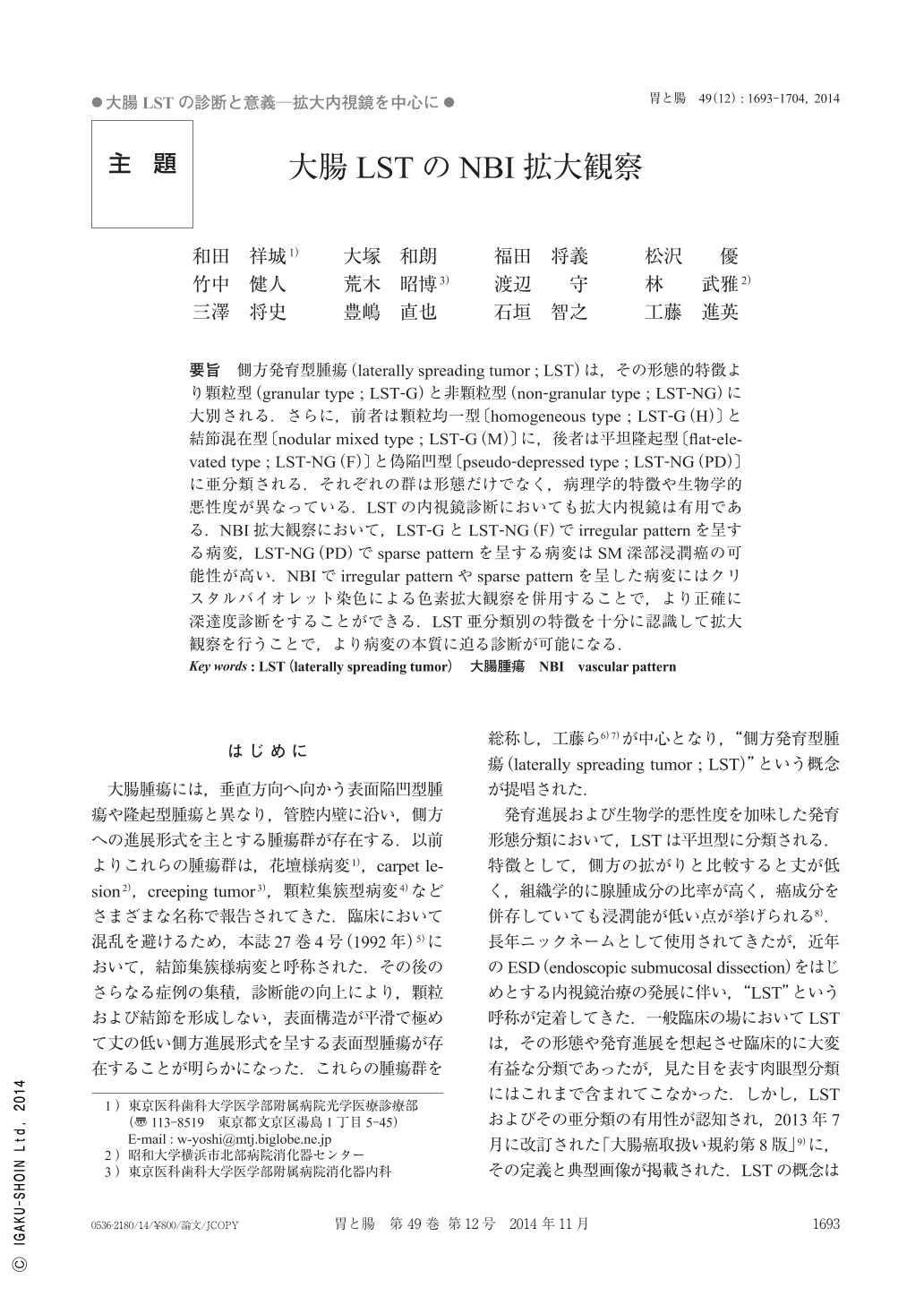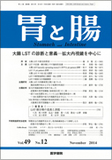Japanese
English
- 有料閲覧
- Abstract 文献概要
- 1ページ目 Look Inside
- 参考文献 Reference
- サイト内被引用 Cited by
要旨 側方発育型腫瘍(laterally spreading tumor ; LST)は,その形態的特徴より顆粒型(granular type ; LST-G)と非顆粒型(non-granular type ; LST-NG)に大別される.さらに,前者は顆粒均一型〔homogeneous type ; LST-G(H)〕と結節混在型〔nodular mixed type ; LST-G(M)〕に,後者は平坦隆起型〔flat-elevated type ; LST-NG(F)〕と偽陥凹型〔pseudo-depressed type ; LST-NG(PD)〕に亜分類される.それぞれの群は形態だけでなく,病理学的特徴や生物学的悪性度が異なっている.LSTの内視鏡診断においても拡大内視鏡は有用である.NBI拡大観察において,LST-GとLST-NG(F)でirregular patternを呈する病変,LST-NG(PD)でsparse patternを呈する病変はSM深部浸潤癌の可能性が高い.NBIでirregular patternやsparse patternを呈した病変にはクリスタルバイオレット染色による色素拡大観察を併用することで,より正確に深達度診断をすることができる.LST亜分類別の特徴を十分に認識して拡大観察を行うことで,より病変の本質に迫る診断が可能になる.
Laterally spreading tumors(LSTs)are classified as either granular(LST-G)or nongranular(LST-NG)tumors. The former type is further subclassified into homogeneous[LST-G(H)]and nodular mixed[LST-G(M)]types, whereas the latter is divided into flat-elevated[LST-NG(F)]and pseudo-depressed[LST-NG(PD)]types. These subgroups differ from each other in nature. Image-enhanced endoscopy with magnification using chromo or NBI(narrow band imaging)is useful for the prediction of cancer invasion. Using magnifying NBI, an irregular pattern was characteristic for LST-G or LST-NG(F)that invaded the submucosal layer, whereas a sparse pattern was unique for LST-NG(PD)that infiltrated the submucosal layer. It is important to make qualitative and quantitative diagnoses using magnifying endoscopy based on the peculiar features of the LST subgroups.

Copyright © 2014, Igaku-Shoin Ltd. All rights reserved.


